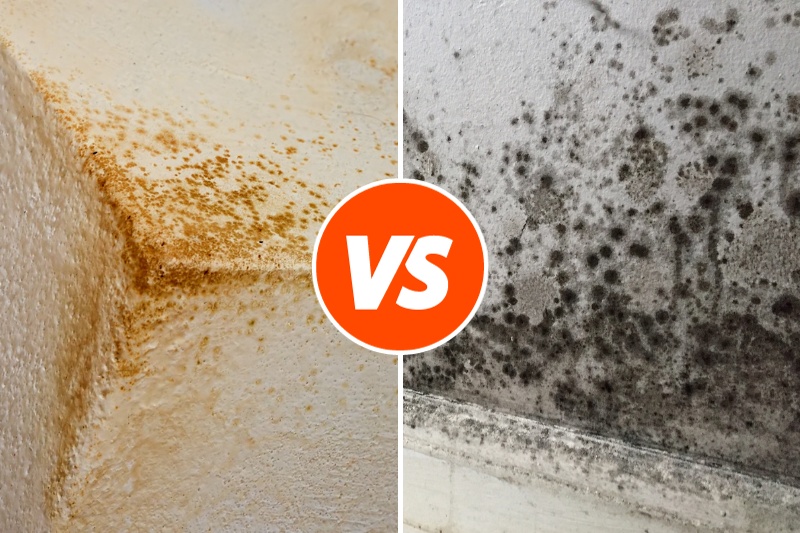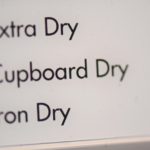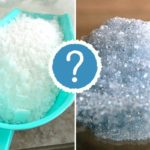Under the right conditions, both mould and mildew can grow in our homes. They’re commonly found in bathrooms and high-humidity areas and must be cleaned away, both for aesthetic and health reasons.
However, knowing which you’re dealing with is crucial to effectively deal with the problem.
This guide looks at the four key differences between mildew vs. mould. By the end, you’ll know how to identify mould and mildew, the health risks of each, and the best cleaning practices.
Are Mould and Mildew the Same?
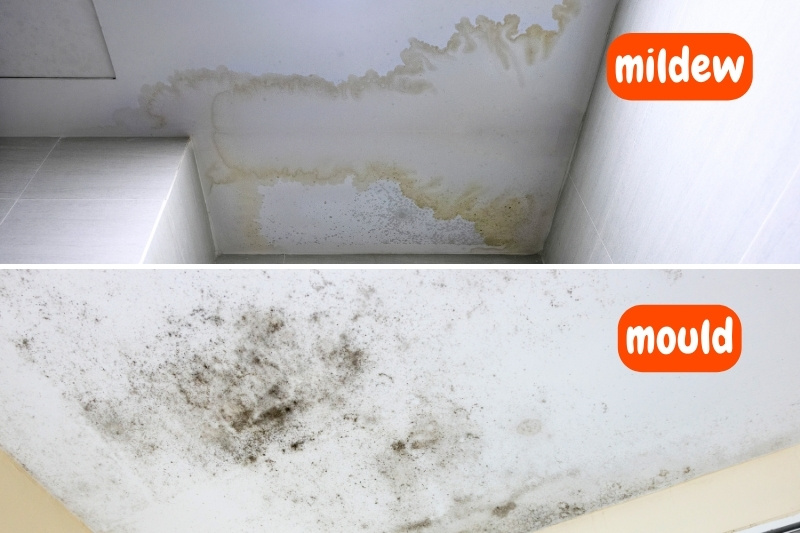
The words “mould” and “mildew” are often used interchangeably, leaving many people believing they’re the same thing.
Mould and mildew certainly have many similarities. Both are types of fungi commonly found in indoor and outdoor environments, often thriving in damp and humid environments like bathrooms.
However, while they share similarities, they are distinct types of fungi.
Mildew is the less invasive and troublesome of the two, often described as an “early-stage mould,” whereas mould is known for its severe adverse health effects.
In the section below, we look closer at the differences between mould and mildew and help you identify which you’re dealing with.
What’s the Difference Between Mildew and Mould?
There are four key differences between mildew and mould:
- Colour and texture
- Location of growth
- Associated health risks
- Cleaning methods
1. Appearance

One of the easiest ways to tell the difference between mould and mildew is to look at their appearance.
Mildew is typically a powdery or fluffy growth with a flat pattern on the surface, often resembling a stain. It is usually light grey or white in colour but can darken during the later stages.
On the other hand, mould tends to appear as fuzzy or slimy patches with irregular patterns and a textured surface.
It can exhibit various colours, such as black, green, white, or brown. Some moulds are so dark that they’re often mistaken for dirt and overlooked.
2. Location
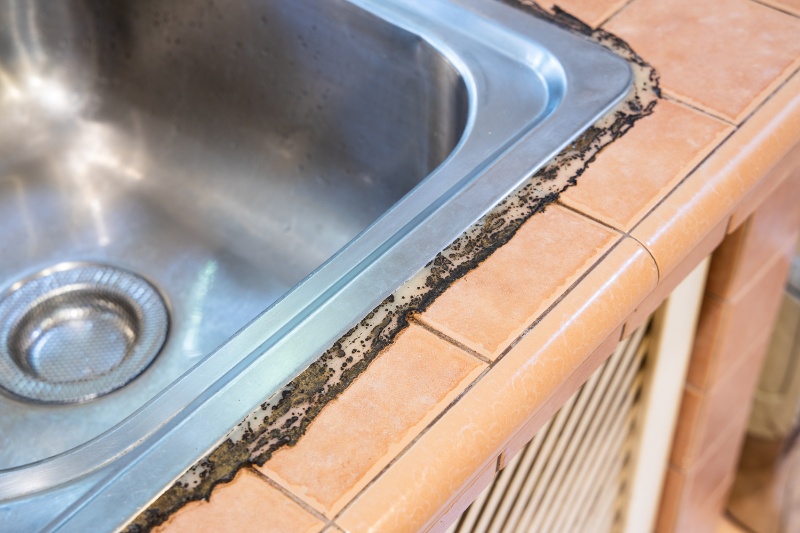
Both mould and mildew thrive in poorly ventilated areas that have lots of moisture. They rely on a damp, high-humidity environment.
Lack of sunlight and dirt can also encourage both mould and mildew to grow. However, they tend to develop in different places around the home.
Mould requires higher humidity levels and tends to grow on organic materials like wood, paper, and fabric.
It commonly emerges in areas with water leaks, flooding, or inadequate ventilation, making basements, attics, and crawlspaces susceptible.
Mould can also develop on walls, furniture, ceilings, and around leaky pipes, as well as on materials like damp carpets, insulation, and wooden surfaces.
On the other hand, mildew commonly appears on bathroom tiles, shower curtains, and damp clothing.
Additionally, mildew can be found on indoor plants and their soil, as well as on paper materials like books or documents exposed to humidity.
3. Health risks
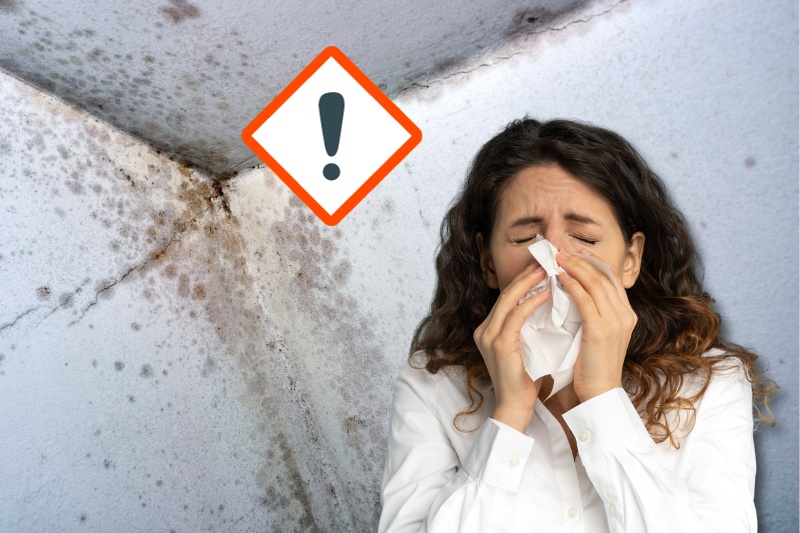
Both mould and mildew can have negative health consequences. However, mould is the more harmful of the two.
Exposure to mould spores can lead to allergic reactions, respiratory issues, and worsened asthma symptoms.
If you have mould in your home, you might suffer from sneezing, coughing, and wheezing.
Additionally, some moulds produce mycotoxins as byproducts as they grow. These mycotoxins can be harmful if ingested or inhaled, potentially causing severe health problems over extended exposure.
More than 200 mycotoxins have been identified, and research into the health consequences is ongoing. However, exposure should be avoided wherever possible.
Health effects from mildew exposure are generally milder compared to mould exposure.
However, while less harmful than mould, mildew can still trigger allergies and respiratory irritation, particularly in individuals sensitive to such irritants.
4. Cleaning methods
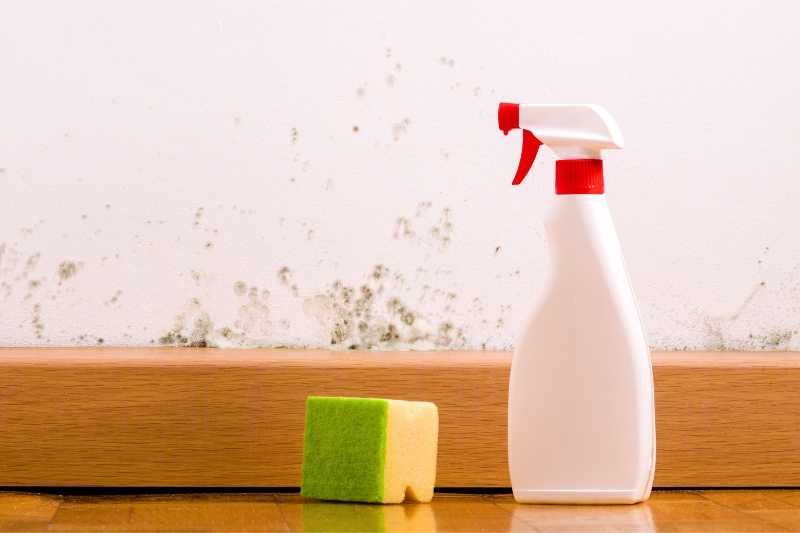
To get rid of mould or mildew from home surfaces, you’ll need to use potent cleaning agents such as bleach (be careful not to mix it with anything else), white vinegar, mould wash concentrate, or commercial mould removers.
Because of the health risks, you must wear protective gear (gloves, masks, goggles, etc.) when cleaning.
These products can be used to eliminate both types of fungi. However, mildew is typically easier to clean than mould.
This is because mildew grows on the surface of a material, whereas mould growth can occur within porous materials.
Take a bathroom tile as an example. Mildew will cover the surface of the tile, whereas mould can penetrate into the tile itself.
When it comes to cleaning, removing mould from walls and other surfaces thus requires extra effort.
You might need to clean the surface multiple times or try several different products before you get the desired results.
Even with strong cleaning agents, some porous materials like drywall or carpet may need to be replaced if heavily affected.
Summary of the Differences Between Mould and Mildew
To summarise the differences between mould and mildew, check out the table below:
| Mildew | Mould | |
|---|---|---|
| Appearance | Typically white or grey, but can turn darker during the later stages. | Can be a variety of colours, including green, black, red, brown, or white. |
| Texture | Has a powdery texture and sits flat against the surface it’s covering. | Can be slimy or fuzzy, typically with a textured/raised surface. |
| Location | Most commonly found on bathroom tiles, shower curtains, damp clothing, and indoor potted plants. | Most commonly grows on walls, ceilings, around leaky pipes, as well as on materials like damp carpets, insulation, and wooden surfaces. |
| Risks | Can cause mild respiratory symptoms, such as coughing and sneezing | Carries more severe health consequences, including allergic reactions and asthma. |
| Removal | Easier to remove as mildew grows outward across the surface. | Harder to remove as mould can grow into the base, especially for porous materials. |
How Do I Prevent Mould and Mildew Formation?
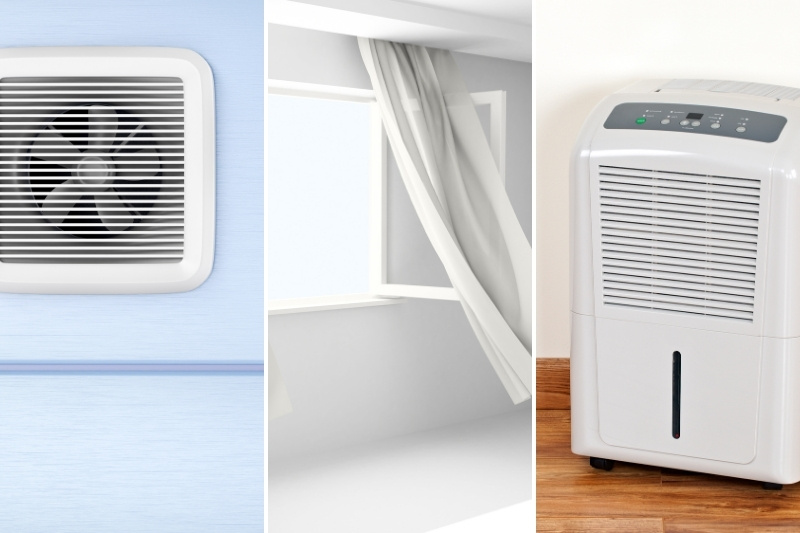
Whether you’re dealing with mould or mildew, prevention is key to maintaining a beautiful home aesthetic and safe living space.
As both are types of fungi that require damp and humid conditions to thrive, you can employ the same prevention methods for both.
Here are our top tips for preventing mould and mildew growth in your home:
- Install exhaust fans into your bathrooms and laundry rooms to help improve ventilation.
- Keep windows open to allow fresh air to circulate, especially on sunny days.
- Purchase dehumidifiers to reduce the humidity in your home (aim for 30 to 50%).
- Repair any leaks in pipes, roofs, or windows immediately to prevent moisture build-up.
- Improve home insulation to prevent wet condensation from forming.
- Monitor indoor potted plants for signs of mildew and mould and repot if necessary.
- Keep the exhausts and vents in your home clear to allow airflow.
- Use a squeegee to wipe down bathroom tiles after showering to remove excess moisture.
- Clean your home regularly to remove any mould before it penetrates deeper.

Hannah has a passion for cleaning. She worked her way around Australia by cleaning hostels in exchange for free accommodation and used her cleaning skills to bag a job as a chalet host for a luxury ski company in France.
